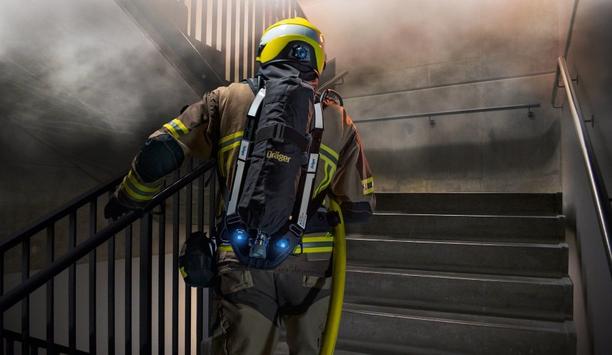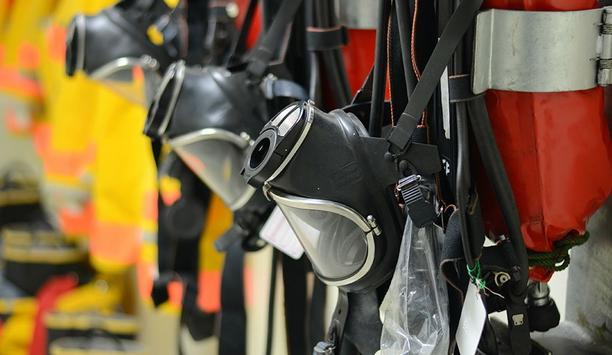As organizations start to plan for next year’s operating budget, it’s a good time to take a closer look at fire prevention, what’s its costing and the value it delivers. It’s the perfect time to look at the policies and procedures associated with fire prevention and look for areas of improvement and optimization.
To help facilitate this discussion, I turned to the report put out by the Fire Protection Research Foundation in 2017, which explored the total cost of fire in the United States based on data collected from 1980 to 2014.
Opportunities for improvement
While I appreciate the data itself is a little dated, the report gives a great view of the actual cost of fires, where the priorities lie based on spend and highlights opportunities for improvement. The report defines the total cost of fire, as the collective of all net expenditure on fire protection and all net losses due to fire incidents.
The report defines the total cost of fire, as the collective of all net expenditure on fire protection
The good news is the hard work is paying off with losses only representing a fraction of the total costs, prevention at $273.1 billion (83.1% of total), and losses at $55.4 billion (16.9% of total). To help operators ask the right questions for planning and budgeting we dug into the data and identified 5 facts for your consideration in 2021/22.
Investment in fire prevention
Fact #1 The total cost of fires has increased by 50% over the 14-year period of the report, with the total losses decreasing by 47%, and the total expenditures increasing by 140.6%. Which tells me, fire prevention is a priority and worth the investment, it saves lives and therefore reduces overall loses. But it also highlights that the budget requirements are growing and likely to continue to grow.
Therefore, it is more important than ever before that we protect the investment in fire prevention, understand and maximize it, which as many knows is easier said than done! So, ask yourself, do you have a clear understanding of your investment, tools, and resources needed to stay safe and prevent fires? Do you have the data necessary to identify opportunities for improvement? Are you exposing operations to unnecessary risk?
Fire grade products
The costs of meeting the required standards within the system are passed down to the buyer
Fact #2, Expenditure on fire grade products represent 16% of total costs at $54 B. This is the ‘cost of meeting ‘fire grade’ standards in the manufacture of equipment, particularly electrical systems equipment and ‘smart’ equipment with its greater use of computer components.’
These systems represent a significant investment for the operation, the costs of meeting the required standards within the system are passed down to the buyer and defines the quality of the system. Therefore, the question is, are the systems being properly maintained to maximize life span and ensure it maintains its fire grade standard? Are you adhering with manufacturer warranty requirements, will it work when needed?
Large ongoing investment
Fact #3, Expenditure on fire maintenance and fire retardants represents 13.4% of total costs at $44 B. This includes the ‘costs of fire maintenance, which was defined to include system maintenance, industrial fire brigades, and training programs for occupational fire protection and fire safety.’
Expenditure on fire maintenance and fire retardants represents 13.4% of total costs at $44 B
Fire Retardants include the ‘costs of fire retardants and all product testing associated with design for fire safety.’ This represents a large ongoing investment in resources and budget for operations, the question is, are they being used efficiently, are they adhering to regulations, is the training being done? Is the money being well spent?
Investment in fire prevention
Fact #4, Expenditure on disaster planning and preparing/maintaining standards represent only 1.2% of total costs or $4 B. This represents the ‘costs of disaster recovery plans and backups’ and the ‘costs of preparing and maintaining standards.’
What jumps out at me on this one, is it appears to be a relatively small amount in relation to other areas, so the question becomes, is it being given the right priority, could we further reduce losses and maximize the investment in fire prevention if we improved how we planned for disasters and managed standards?
Fire insurance expenditure
Net fire insurance expenditure represents, 7% of total costs or $23.6 B
Fact #5, Net fire insurance expenditure represents, 7% of total costs or $23.6 B. This is ‘defined as the difference between the insurance premiums paid by property owners (personal and commercial) for insuring their property from fire and the damages claimed from insurers.’
Which says investing in the insurance necessary to protect the operation has a sizable impact on the operating budget and you need it to be there and available if a fire strikes to ensure business continuity. Therefore, the questions to ask yourself are, if the insurance is needed, will you have the data to defend your claim? Or if it’s not needed because fire prevention is top notch, will you have the data to negotiate lower rates? How long will it take to compile the data necessary to support your argument, is the data believable?
Other important questions
There is no doubt, fire Prevention is an important and significant investment for organizations, but the question is, is there a better way of managing it, do you have the data necessary to ensure compliance with operating regulations, are staff operating efficiently, is the job getting done? Unfortunately for many, we simply don’t have the data necessary to answer these and many other important questions when it comes to planning and defending your operating budget.
Fire prevention is complicated, the building code for commercial properties has over 200 pages
Fire prevention is complicated, the building code for commercial properties has over 200 pages detailing the safety procedures, products and signs that must be installed and functioning 24hours a day, 7 days a week. That must be inspected and tested daily, weekly, monthly, yearly to reduce losses and improve safety.
Fire prevention policies
The challenge is not in understanding what must be done but in how we manage it. Many organizations are still relying on spreadsheets and signing off the ticket on the fire extinguisher for tracking and monitoring fire prevention procedures. Hoping that when a faulty, missing, or broken fire extinguisher gets identified that the right people are informed, that the issue gets addressed. This lack of visibility presents a lot of opportunities for something to go wrong, and when it does have dire consequences.
It is our belief that it is time to digitally transform how we manage fire safety and procedures. Relying on the ways of yesterday, are no longer going to cut it and are actually exposing operations to more risk and cost than is necessary. Technology has evolved in ways that enable operations to cost-effectively eliminate the fear, uncertainty, and doubt in fire prevention policies and procedures and have the data to prove it!



















